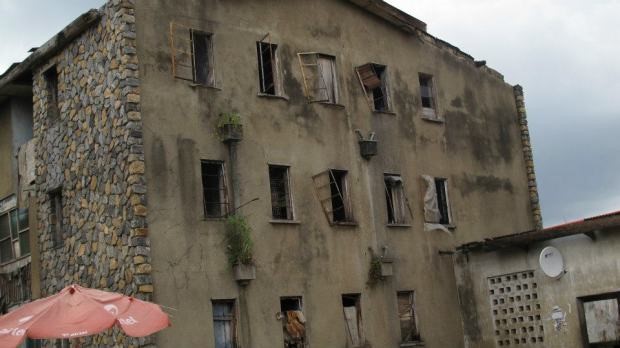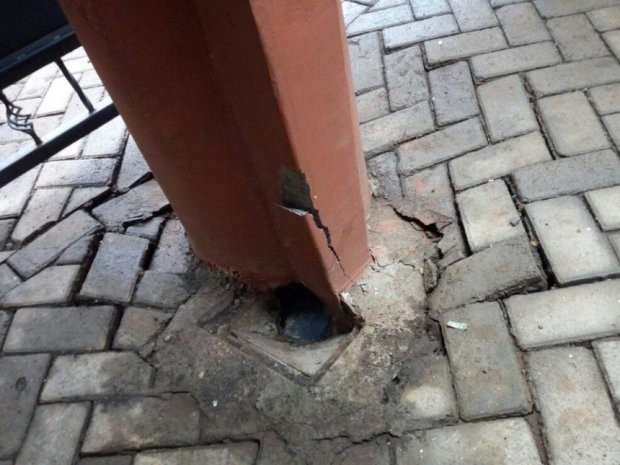In recent years it has become almost weekly news to hear of one house collapse or the other from the media news houses. It Is almost a common occurrence which has led to the loss of lives and properties worth millions of naira. There is a cause for concern, especially when one regards the frequency in which most of the houses collapse.
It is duly noted that most of the houses that collapse are multi-story building structures. The reason for these collapses have been attributed to several things including the “devil” himself, but a closer look into the issue shows that buildings do not just collapse. They give warning signs for one to take note of and heed to its warning.
If only some of the signs that were shown by buildings were heeded, there would have been greater chances of saving the lives and millions of naira lost in the wreckage.
Some of the major building collapses in Nigeria in recent times is the December 10th, 2016, Uyo church collapse where over 200 people were trapped under the collapsed church building. There have also been several cases in Ibadan, Ogun, and majorly in recent months, Lagos state. Remember the Synagogue church collapse. The most recent is the Ikoyi 21 story collapse.
By carrying out a structural integrity test some of these buildings would have been saved. Engaging a professional real estate surveyor can help save the costs incurred from the collapse of these buildings. Believe me, having a professional real estate company carry out the integrity test comes at almost zero cost compared to the loss resulting from an outright building collapse.
The fact remains that buildings do not just collapse. There are always warning signs.
From the signs we shall discuss in this article, once you notice any or most of them, it is your duty to notify your nearest Local Council Development Area (LCDA). This will help save the loss of life and the complete property.
SIGNS OF A COLLAPSING BUILDING
Creaking Sounds – Creaking sounds occur when the metal parts of the building contract more than the wooden parts, as a result, both parts rub against each other. Creaking sound is an indicator that parts of the building are failing and when it becomes loud and repetitive, that is a sign to evacuate the building.
Weak Supporting Structures – Weak supporting structures can result from several factors such as substandard building materials, tears, and fissures in foundation structures. A building is likely to collapse when a primary structural element fails, leading to the failure of other structural elements, which finally culminates in the collapse of the building. Also, deformed siding can lead to building collapse because it is the siding that protects your building from moisture and other elements.
Moving House – This is one of the most hazardous warnings of an impending building collapse. Over a period of time, certain parts of the house start shifting from their original position due to foundation problems. When the foundation of the building shifts, it creates ripple effects of events throughout the house, which causes the house to move.
Cracks in the wall
When you begin to see large cracks in the walls around the house, note that those are signs of an impending accident.
Large cracks are different from small ones. Those ones are mild and don’t pose an immediate danger to your building.
But when the cracks go beyond mild and grow wilder, then it becomes something you should be concerned about. These cracks can be structural or non-structural cracks.
By structural cracks, we mean cracks that are run into the pillars down to the foundation/floor of the building. Non-structural cracks are minor wall cracks that may not affect the pillars and foundation of the building.
Dilapidation

Dilapidation leads to deterioration in the support structure of the building. When you start seeing this deterioration on your property, then know it is a disaster waiting to happen. Your house is in danger of a possible building collapse.
Molds and water stains are caused by moisture penetration when water reaches a part of the house that should not be wet. Damp occurs when excess moisture is trapped within the structure of a house. Moisture has a natural tendency to spread out from wet areas of a house to the dry parts. This will then weaken the part of the house and thus weaken the building itself
Moving House
One of the most dangerous warnings of an impending collapse is when the house is moving.
There are times when you would notice that certain parts of the house have shifted from their original position.
This means that over a period of time, certain parts of the house have shifted from their original position as a result of foundation problems.
The signs of this movement are major cracks on your wall or when it becomes difficult to lock your doors or windows again.

Technically, when the foundation of the building shifts, it sets into motion, a disturbing number of serious events throughout the house, which forces the house to move.
Immediately this is noticed, you should evacuate the building. This is the most dangerous sign of a collapsing building
Creaking and popping sounds
If you notice that the house you live in begins to make creaking and popping sounds, you should be very worried.
By this creaking sound, what is happening is that the metal parts contract much more than the wood does. As a result, the nails, pipes, and air ducts rub against the wood.
Also, the wood rubs and grinds against other wooden parts of the structure, which creates creaking sounds.
If you ever find yourself hearing weird sounds and cracks especially during strong winds, it’s a sign you should pay attention to. The building may come down soon.
Faulty Foundation
There is a saying among builders that, “a building is only as strong as its foundation.” This is age-old wisdom because, in a real sense, a foundation is structured to carry the weight of a building.
Therefore, it is only logical that when the foundation is faulty, the building above it suffers. This can cause the building to collapse at any time.
Noticeable gaps between floors
When there are gaps between the walls and floors of a building, you must understand that this is a structural defect that could end very badly.
Uneven spaces and sloping floors are not to be taken lightly. Houses should be straight and not bent. When you notice this, it is a good sign that the house is about to go down.
WHAT DO YOU DO?
There is no building that will collapse without giving at least any of the above warning signs. So it is important you pay attention to your properties for any of the signs.
You can either call a real estate company for the property inspection and then notify the Local Government Development Area (LCDA), and evacuate the building while waiting for a professional response.
Not only will you be saving your properties, you will also be saving lives and families when you notice these signs and act accordingly







